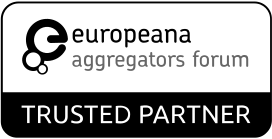img. source: Internet.
JPEG PLENO – Tremendous progress has been achieved in the way consumers and professionals capture, store, deliver, display and process visual content. Emerging cameras and displays allow for the capture and visualization of new and rich forms of visual data. JPEG Pleno intends to provide a standard framework to facilitate capture, representation and exchange of these omnidirectional, depth-enhanced, point cloud, light field, and holographic imaging modalities. It aims to define new tools for improved compression while providing advanced functionalities at the system level. Moreover, it targets to support data and metadata manipulation, editing, random access and interaction, protection of privacy and ownership rights as well as other security mechanisms.
At the 74th JPEG meeting in Geneva, Switzerland the final Call for Proposals (CfP) on JPEG Pleno was issued particularly focusing on light field coding. The call encompasses coding technologies for lenslet light field cameras; and content produced by high-density arrays of cameras. In addition, system-level solutions associated with light field coding and processing technologies that have a normative impact are called for. In a later stage also calls for other modalities such as point cloud, holographic and omnidirectional data will be issued.
JPEG XS – This project aims at the standardization of a visually lossless low-latency lightweight compression scheme that can be used for a wide range of applications including mezzanine codec for the broadcast industry and Pro-AV markets. Targeted use cases are professional video links, IP transport, Ethernet transport, real-time video storage, video memory buffers, and omnidirectional video capture and rendering. After a Call for Proposal and the assessment of the submitted technologies, a test model for the upcoming JPEG XS standard was created and the results of a first set of core experiments have been reviewed during the 74th JPEG meeting in Geneva. More core experiments are on their way before finalizing the standard: JPEG committee therefore invites interested parties – in particular coding experts, codec providers, system integrators and potential users of the foreseen solutions – to contribute to the further specification process.
JPEG Privacy & Security – This project aims at developing a standard for realizing secure image information sharing which is capable of ensuring privacy, maintaining data integrity, and protecting intellectual property rights (IPR). JPEG Privacy & Security will explore ways on how to design and implement the necessary features without significantly impacting coding performance while ensuring scalability, interoperability, and forward and backward compatibility with current JPEG standard frameworks.
A draft Call for Proposals for JPEG Privacy & Security has been issued and the JPEG committee invites interested parties to contribute to this standardisation activity in JPEG Systems. The call addresses protection mechanisms and technologies such as handling hierarchical levels of access and multiple protection levels for metadata and image protection, checking integrity of image data and embedded metadata, and supporting backward and forward compatibility with JPEG coding technologies. Interested parties are encouraged to subscribe to the JPEG Privacy & Security email reflector for collecting more information. A final version of the JPEG Privacy & Security Call for Proposals is expected at the 75th JPEG meeting located in Sydney, Australia.
JPEG AIC – This project provides guidance and standard procedures for advanced image coding evaluation. At this meeting JPEG completed a technical report: TR 29170-1 Guidelines for image coding system evaluation. This report is a compendium of JPEGs best practices in evaluation that draws sources from several different international standards and international recommendations. The report discusses use of objective tools, subjective procedures and computational analysis techniques and when to use the different tools. Some of the techniques are tried and true tools familiar to image compression experts and vision scientists. Several tools represent new fields where few tools have been available, such as the evaluation of coding systems for high dynamic range content.
JPEG 2000 – The JPEG committee started a new activity for high throughput JPEG 2000 and an AHG was created to investigate the evidence for such kind of standard. Experts are invited to participate in this expert group and to join the mailing list.
“JPEG continues to offer standards that redefine imaging products and services contributing to a better society without borders.” said Prof. Touradj Ebrahimi, the Convener of the JPEG committee.
About JPEG The Joint Photographic Experts Group (JPEG) is a Working Group of ISO/IEC, the International Organisation for Standardization / International Electrotechnical Commission, (ISO/IEC JTC 1/SC 29/WG 1) and of the International Telecommunication Union (ITU-T SG16), responsible for the popular JBIG, JPEG, JPEG 2000, JPEG XR, JPSearch and more recently, the JPEG XT, JPEG XS and JPEG Systems and JPEG PLENO families of imaging standards.
The JPEG group meets nominally three times a year, in Europe, North America and Asia. The latest 74th meeting was held on January 15-20, 2017, in Geneva, Switzerland. The next (75th) JPEG Meeting will be held on March 26-31, 2017, in Sydney, Australia.
More information about JPEG and its work is available at www.jpeg.org


